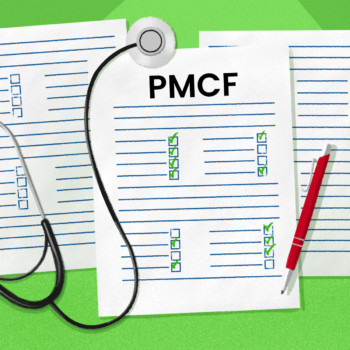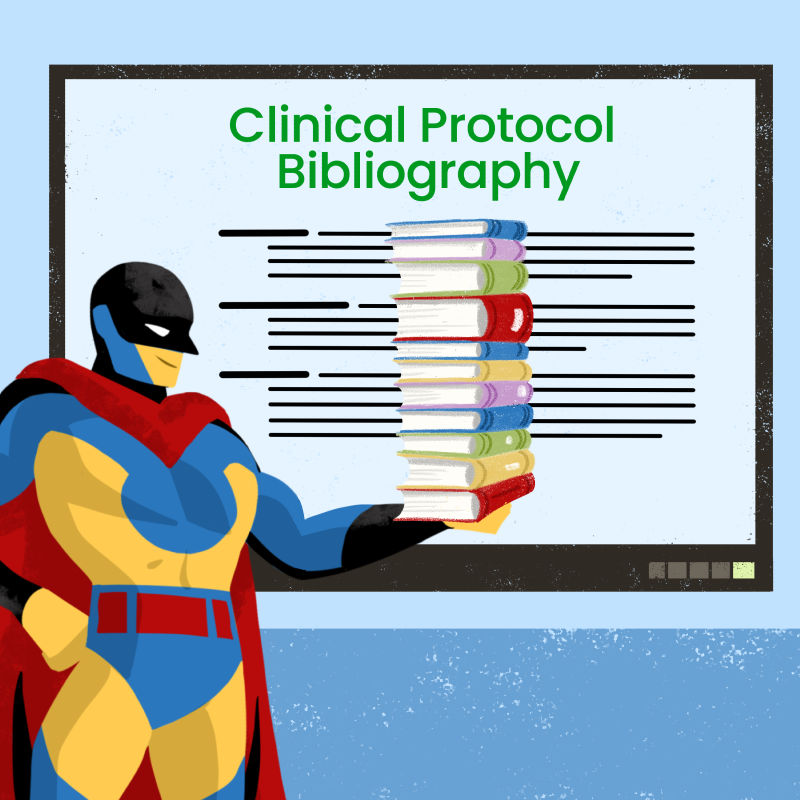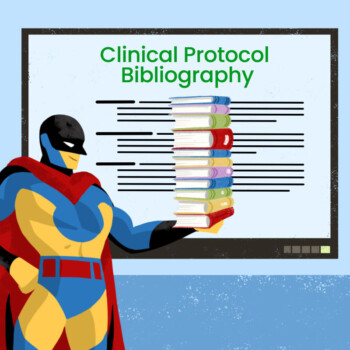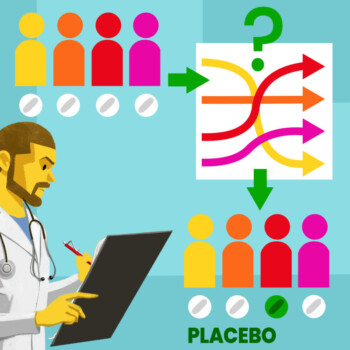The bibliography of a clinical protocol is a crucial section of the document that lists all the sources used to support the methodological, scientific, and clinical choices of the study.
Its primary function is to demonstrate that the clinical protocol is built on a solid foundation of existing knowledge, ensuring that the hypotheses and objectives of the study are well justified and scientifically valid. Additionally, the bibliography helps to support methodological choices, such as inclusion and exclusion criteria for participants, data collection methods, and statistical analysis techniques, ensuring that the study is conducted rigorously while promoting replicability and transparency. Finally, the bibliography contextualizes the study within the current clinical landscape, highlighting how it may contribute to filling existing gaps and emphasizing the relevance and innovation of the research.
Constructing a bibliography for a clinical protocol requires a systematic and critical approach. Before starting, it’s essential to have a clear understanding of the protocol’s objective. Defining the research questions and specific study objectives will guide the selection of relevant sources and ensure that the bibliography is focused and pertinent.
Once the objectives are defined, the next step is to identify useful sources for planning and implementing the protocol, such as peer-reviewed journal articles, textbooks, previous studies, guidelines, manuals, and other relevant materials. This can be achieved through a thorough review of the existing literature, divided into several phases:
- Identifying Keywords: Determine the search terms based on the objectives of the clinical protocol.
- Selecting Databases: Access to high-quality sources requires using reliable scientific databases. Major databases include PubMed, Embase, Cochrane Library, and Scopus, each with its own characteristics. Using multiple databases ensures a more comprehensive search, allowing for a deeper and more accurate view of available information.
- Selection Based on Inclusion and Exclusion Criteria: Clearly define the criteria for including or excluding studies to ensure that the information is relevant and reflects the latest scientific and technical knowledge. These criteria may be based on various factors, such as publication date, study type, patient population considered, and other relevant aspects.
- Critical Evaluation of Sources: Consider the aspects that determine the reliability, relevance, and timeliness of sources, including study methodology, sample size, statistical significance of results, authority of the authors, and overall quality of the publication.
Once the sources are collected and evaluated, it is also important to structure the bibliography logically and coherently, such as by dividing sources by themes or sections of the protocol, to facilitate the writing and consultation of the document. An accurate and well-structured bibliography makes it easier for ethics committees and regulatory bodies to review the clinical protocol, providing the necessary information to assess the scientific validity, ethics, and safety of the proposed study.
Additional tips:
- Constructing the bibliography is not a static process. Regularly update the bibliography with the most recent and relevant publications to keep the protocol clinically up-to-date.
- Utilizing bibliographic management software, such as EndNote, Mendeley, or Zotero, can greatly simplify the bibliography construction process, saving time and reducing the risk of errors. These tools allow for automatic creation of formatted bibliographies according to various citation styles (e.g., APA, MLA, Vancouver), importing, archiving, and organizing references, adding annotations, and linking notes to sources.
- Engaging medical writers can help ensure that the bibliography is comprehensive, relevant, and accurately selected, expediting the source selection process.
Building an appropriate bibliography for a clinical protocol requires attention, rigor, and a good organizational strategy. A well-constructed bibliography not only supports the scientific validity of the protocol but also provides a solid evidence base that can ensure regulatory approval and the overall success of the clinical study. Investing time and resources in the research, evaluation, and organization of bibliographic sources is essential to guarantee the quality and reliability of the clinical protocol.











